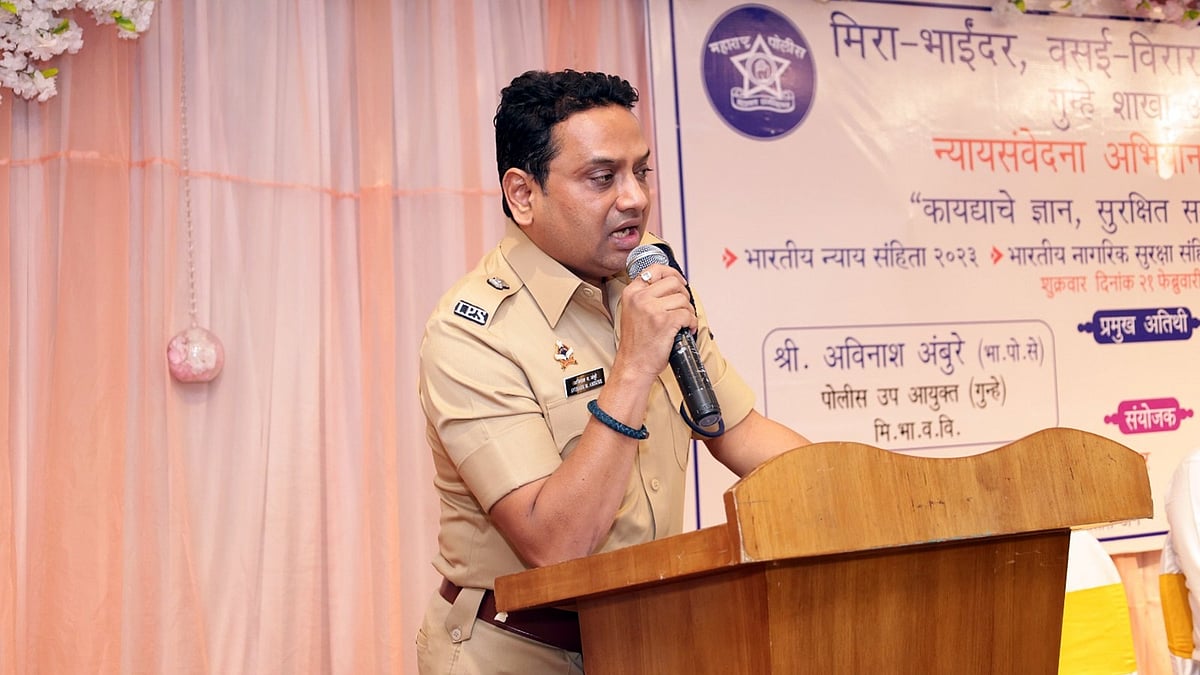In a bid to enhance the knowledge and understanding of the new criminal laws, the Mira Bhayandar-Vasai Virar (MBVV) police organized a seminar for citizens in Mira Road on Saturday.
Apart from providing comprehensive insights and highlighting key features of the recently introduced- Bharatiya Nyay Sanhita (BNS), Bhartiya Nagrik Suraksha Sanhita (BNSS), and the Bharatiya Sakshya Adhiniyam (BSA), senior officials attached to the various departments including- anti-terrorist squad, anti-narcotics and cyber cell spoke at length about preventive measures to be adopted to avoid falling prey to the evil designs of criminals, drug-cartels and cyber fraudsters.
Around 250 citizens (aged 30 to 50 years) registered their active participation in the seminar.

Prof. Rahul Roy from L.R. Tiwari College also gave inputs about the changes and newly introduced sections in the criminal codes. The officials led by DCP (Crime)-Avinash Ambure also clarified doubts and queries raised by the participants regarding the legal framework and application of the new laws.
To create a more efficient and accessible justice system aimed at providing a new approach to penalties and punishments for crimes, the parliament passed the three new criminal codes including the BNS in December 2023, which came into effect replacing the age-old Indian Penal Code-1860 on 1, July, 2024.
Similarly, the Bharatiya Nagarik Suraksha Sanhita (BNSS) and Bharatiya Sakshya Adhiniyam (BSA) also came into force throughout the country by replacing the Code of Criminal Procedure (CrPC)-1973 and the Indian Evidence Act 1872.
While the BNS which has 358 sections (divided into 20 chapters) includes new sections, amendments and deletions of some provisions from the IPC, the BNSS has 531 sections, 39 chapters, and two schedules. On the other hand, the BSA has a total of 170 sections.
